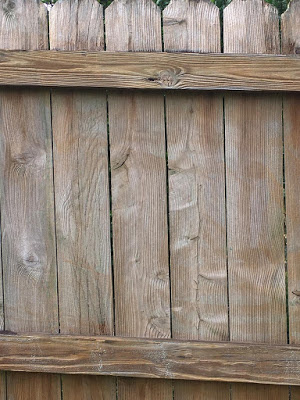Care of Wood Decks



Deck Restoration
The bright color of the wood on weathered decks can be restored by application of commercial products (called deck cleaners, brighteners, or restorers). These products do not add color to the deck, but remove mildew and dirt, allowing the natural color of the wood to show. If all the natural color has been leached from the surface, the wood may appear colored when wet but silver when dry after cleaning. The silver color comes from empty wood fibers that should not be removed because they absorb stain well. Aggressive scrubbing with a caustic cleaner or power washing can remove wood from the surface, particularly on softer wood such as western redcedar. Mildew can also be removed using a liquid household bleach. Dilute the bleach with 3 parts water and add some detergent. If working alone or slowly, more water should also be used.
Power Washing
I prefer power washing my wood deck and fence. It is fast and inexpensive and provides produces a “new” surface. I allow a few days for the boards to dry and then spray apply a water-repellent with UV protection. This process generally lasts for one year. My exterior wood is CCA-treated southern pine. I am careful not to be overly aggressive with the pressure washer because I do not want to produce raised fibers on the surface.
Fuzzy Grain
If you have ever planed a wet board you have probably seen raised fibers (also known as fuzzy grain). Raised grain is defined in American Lumber Standards for Softwood Lumber as an uneven surface on dressed lumber in which hard summerwood is raised above the seller springwood but not torn loose from it.
The fuzzy appearance of the surface of lumber is due to the summerwood (the outer, harder portion of each annual growth ring) being projected above or depressed below the level of the softer springwood. Raised grain occurs particularly in woods with pronounced difference in structure between the summerwood and the springwood, especially among the softwoods, but has also been observed in wood with such relatively uniform structure as yellow-poplar. In flat-grain lumber, corrugation of the surface is due principally to a crushing of the hard summerwood into the softer springwood beneath it by the planer knives. The summerwood subsequently rises as the springwood cells underneath gradually resume their original shape. Pounding of the summerwood into the springwood is aggravated by planer knife dullness. In boards planed with a sharp planer, there is typically no evidence–under the microscope–of crushing of the springwood. Other machine conditions, such as the bevel of the knife edge, the heel on the knives, the knife speed, and the pressure of feed rolls, may also affect the amount of raised grain. By the way, wood planed by hand shows very little corrugation. Pressure washing has the potential to serve the same purpose as a dull planer.
Caution: Do not use a liquid detergent or a detergent containing ammonia. Ammonia reacts with bleach to form a toxic gas. The bleach solution should be rinsed from the deck with water. If the deck is to be finished after cleaning, allow at least 2 warm, windy days to dry.
Credit: Finishes For Wood Decks by Mark Knaebe, USDA Forest Service Forest Products Laboratory One Gifford Pinchot Drive Madison WI 53726–2398.
Meet the Author
Dr. Todd Shupe is the President of Wood Science Consulting, LLC. He is a well-recognized expert on wood forensics, wood preservation, wood decay and degradation, and wood species identification. He has a broad background in new product development, quality management, and marketing and sales in both the public and private sectors. For more information please visit DrToddShupe.com.
We welcome your comments below.
Thank you for visiting. We trust that you have enjoyed reading our articles.
Liked this post? Read more below or search for more topics . . .

